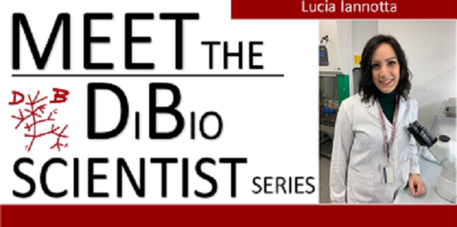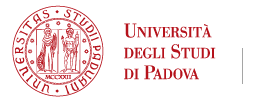
MEET THE DIBIO SCIENTIST SERIES : Lucia Iannotta
Scadenza: 02.11.2022 14:35
Pubblicato il: 01.11.2022 13:00
Lucia is a post-doctoral fellow at DiBio
Can you summarize in few words your research?
My research focuses on the study of small organelles called primary cilia. These organelles represent very specialized signalling platforms as they can detect a multitude of signals from the environment and then mediate cellular responses. In detail, the aim of my project is to investigate the involvement of the protein kinase PAK6 in modulating primary cilia dynamics in the brain, through the binding with the Parkinson’s disease-linked kinase LRRK2 in both physiological and pathological contexts.
What is the most rewarding and the most challenging part of your work?
The most rewarding and the most challenging parts of my work are just two sides of the same coin. Indeed, I feel really gratified when, after coming up with an original idea, I am able to confirm it with clear results. On the other hand, I feel challenged by the reasoning process behind the experimental plan, that requires both good intuition and constant study.
Tell us your story: what brings you to DiBio?
I obtained my PhD in Naples, where I started as a student in Nutritional Biology. At the beginning of my academic career I had never expected to become a scientist. However, during my Master thesis in a physiology lab, I got hooked on the brain and, from that moment on, I understood that studying the basic, but complex rules controlling brain biology and function would have been my own way for the life.
What would you tell your younger self?
“Be always curious and keep your options open”! Curiosity is the real engine of science and, over these years, I learned that even the subjects that apparently may seem very distant to your research topic can provide nice suggestions and promote original ideas. Then, I would also suggest my younger self to address all issues lightly and to cope with the challenges of life with a spirit of playfulness.
What’s your favourite “toy” for research – and what can it do?
Considering that my research is focused on studying morphology and location of primary cilia, I generally rely on fluorescence microscopy to visualize these small extracellular structures. Therefore, I had the chance to work a lot with microscopes and to appreciate them as well, especially because they allow both to acquire impressive images and to obtain quantitative information.
What are your interests outside science?
In my free time I love reading books, visiting new places, tasting new foods, watching tv series and drinking a glass of good wine with my friends.





